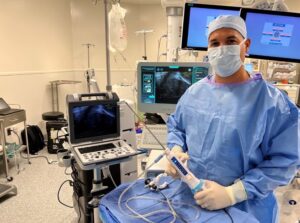
Often diagnosed during the newborn examination, hypospadias is a condition in which the urethra does not reach the tip of the penis. This can affect the flow of urine, and can cause problems with sexual intercourse. The condition is caused by an opening in the urethra, which is located on the underside of the penis. It can also affect the direction of the urine flow. Surgical repair of hypospadias is an effective means of correcting the problem.
The condition can be caused by several factors, including genetics, environmental toxins, and medications taken during pregnancy. A small number of cases may be so mild that they do not require surgery. The goal of the surgery is to straighten the penis and create a penis that looks normal. If the condition is severe, there may be several surgeries needed.
Hypospadias is more common in infants than in adults. The condition is also more common in babies who were born premature or with low birth weight. In addition, it may be more common in infants whose mothers are over 35 years of age. There is no known cause of hypospadias, but the condition is believed to be caused by a combination of genetics and environmental factors. It is important to discuss your child’s situation with a pediatric urologist if you have any concerns.
Hypospadias is usually detected at birth, though it can be present for several years. It can cause problems with sexual intercourse, and can cause trouble urinating while standing. The condition may also affect self-esteem. The condition is usually noticeable when the baby pees in a different direction than usual. There are a variety of surgical approaches to correct hypospadias, which may involve using extra foreskin from the penis to repair the opening.
Hypospadias is most common in boys. Boys with hypospadias usually make a full recovery. However, they may have some discomfort after the surgery. Usually, the surgery is an outpatient procedure, but children may need to stay overnight in the hospital. In the meantime, they will be given regular pain relief. It is also recommended that children undergo follow-up with a pediatric urologist to check on the healing process and possible complications.

During the surgery, the urethra is redirected to the tip of the penis. Depending on the severity of the defect, the procedure may involve reattaching extra foreskin or using a special device to make the opening more permanent. The goal of the surgery is to correct the penis and reconstruct it so that it is straight during erection. The surgery is done under general anesthesia and can take as little as a few hours to perform.
Hypospadias is one of the most common birth defects. It occurs in one in 150 babies, most commonly in boys. It can affect sexual intercourse and self-esteem, and can cause problems with urinating while standing. The condition is known to occur in children of any age, but boys have a greater risk of developing hypospadias.

